NEOTROPICAL (SOUTHERN SOUTH AMERICAN)
Temperate Forests (Valdivian & Magellanic)
The forests here include the Valdivian temperate rainforest of the central coast of Chile, and the Magellanic subpolar forests of southern Chile and Argentina. The latter are the most southerly forests in the world. There are also other closely associated habitats: in and along the edge of the forests are more open grasslands and moorlands. The mix of closed and open habitats, interesting endemic diversity, lower temperates, and lack of dangerous or annoying animals, makes for a pleasant ecosystem to explore...
The more southerly 'Magellanic forest' often grows despite steep slopes around areas such as the Chilean fjords. It's growth is assisted by receiving sufficient rain from the constant westerly winds.
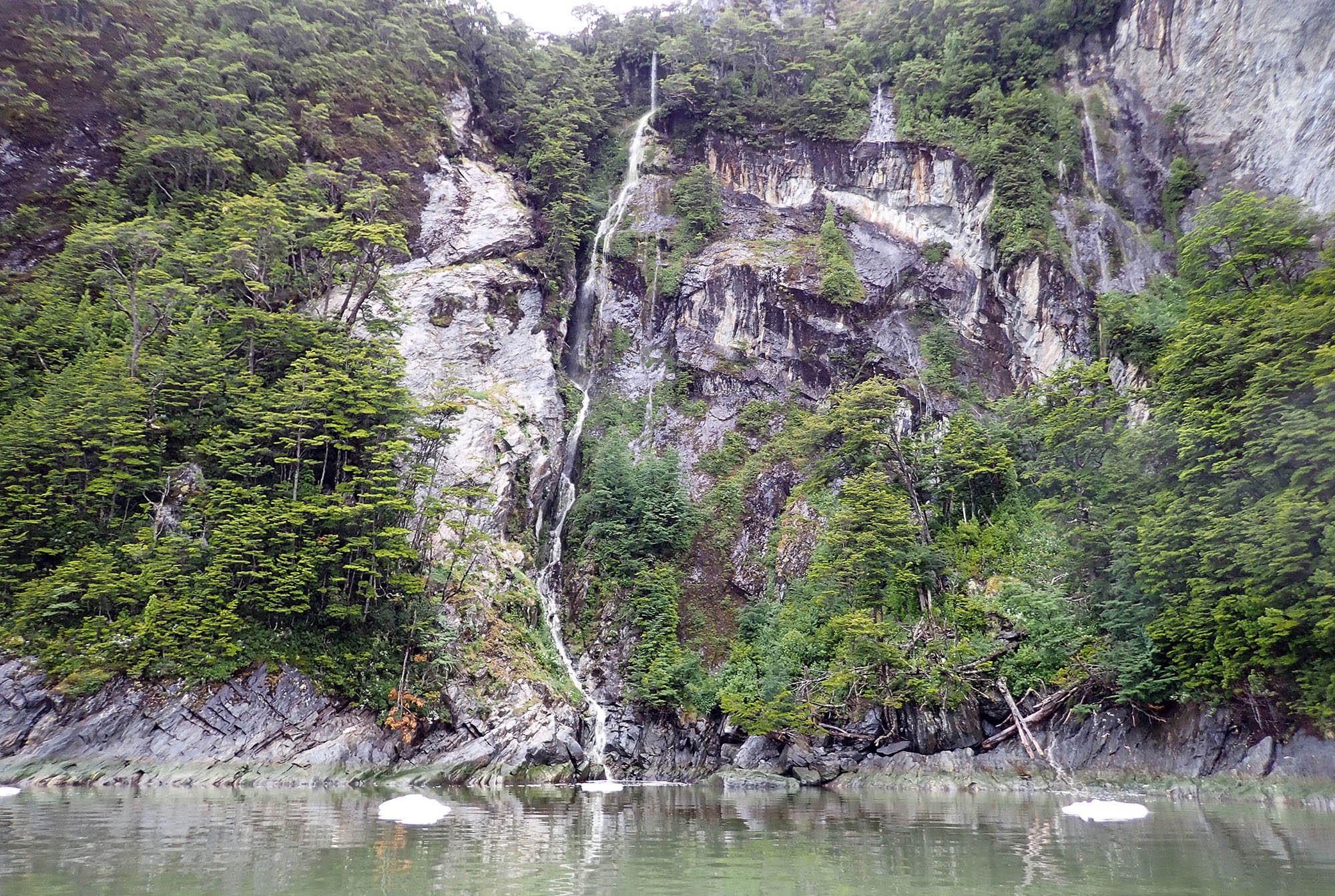 Steep wall covered in vegetation (Garibaldi, Chile)
Steep wall covered in vegetation (Garibaldi, Chile)The more southerly 'Magellanic forest' also grows despite the low temperatures; icebergs can be seen floating past the forested slopes throughout the Chilean fjords...!
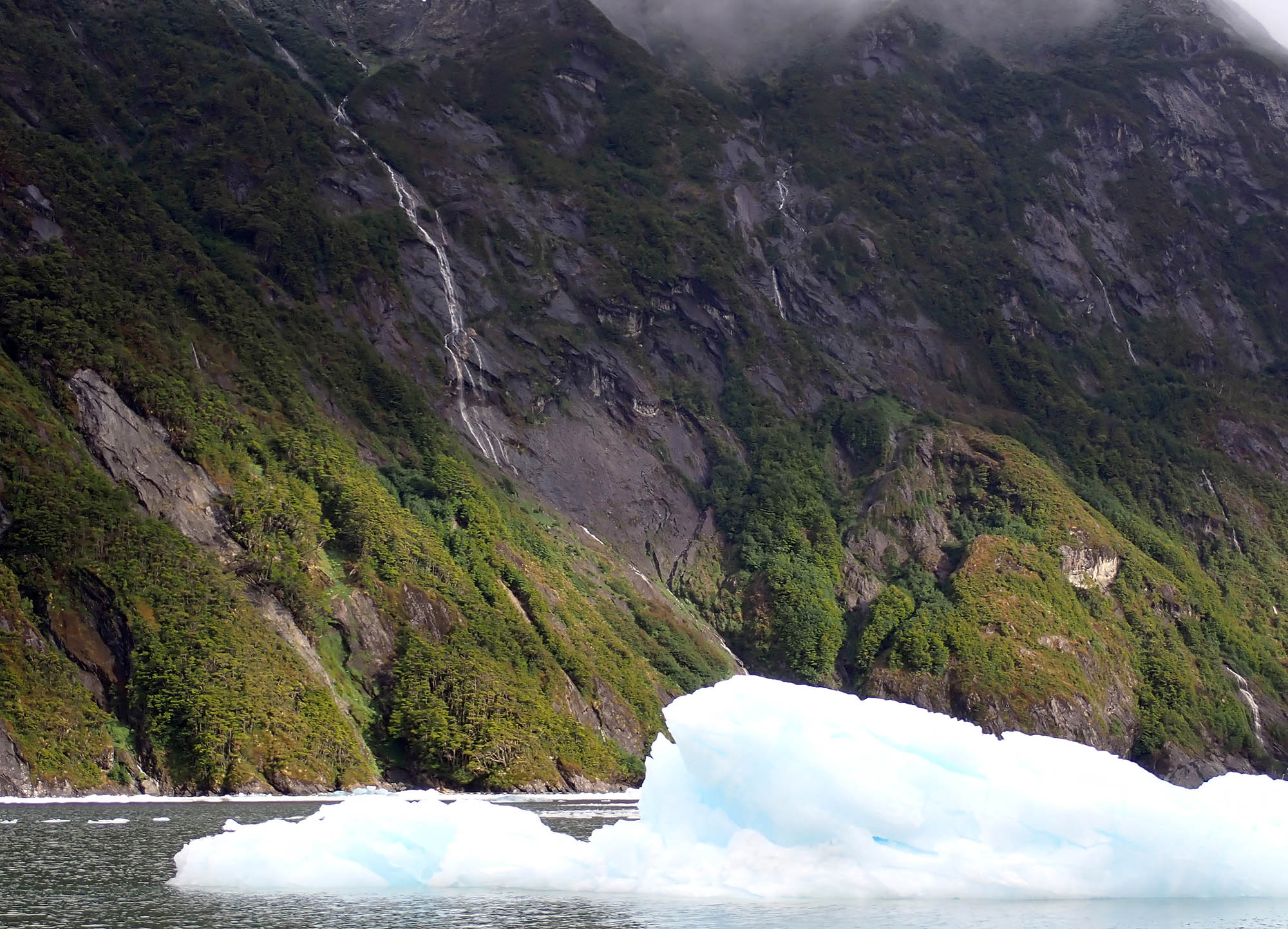 (Garibaldi, Chile)
(Garibaldi, Chile)One of the most striking parts of the vegetation in this ecosystem is Cyttaria darwinii, 'Darwin's Fungus', 'Indian Bread'. It grows as very obvious lumps on Nothofagus Beech trees. The tree reacts by developing large galls (the wooden round lumps erupting from tree trunks), on which the fungus may produce it's fruiting body; these look like golf balls. The common name is because it was first collected by Charles Darwin. He noted that this fungus was eaten by indigenous people, and that the locals barely seemed to eat any other vegetation besides this. The fungus is edible, but apparently tasteless.
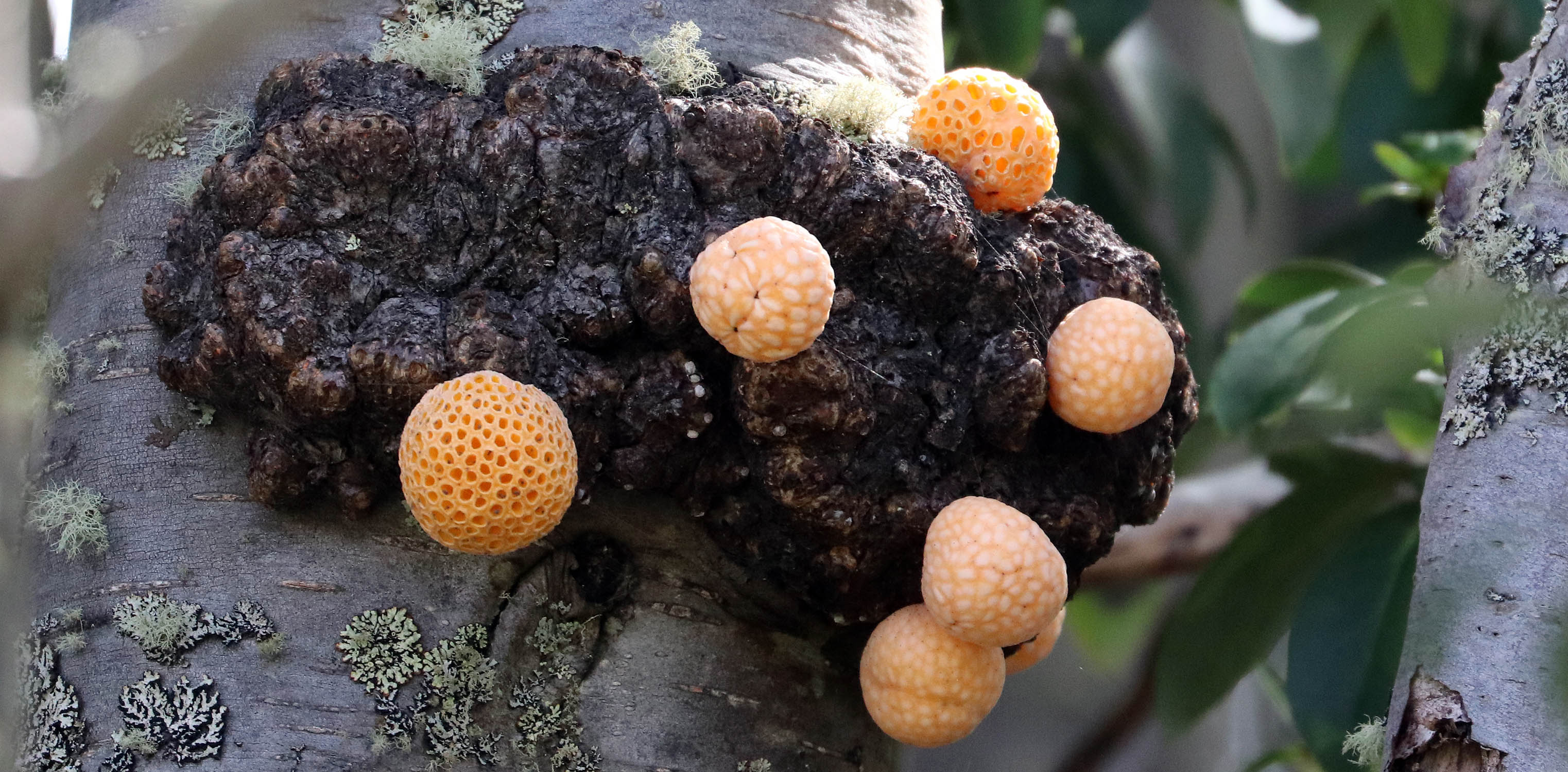 Darwin's Fungus (Puerto Williams, Chile)
Darwin's Fungus (Puerto Williams, Chile)Another obvious fungus becuse of it's colour is the ‘Calafate Rust Fungus', Aecidium magellanicum. It grows on the locally common Berberis microphylla, ‘Magellan Barberry’ or ‘Calafate’.
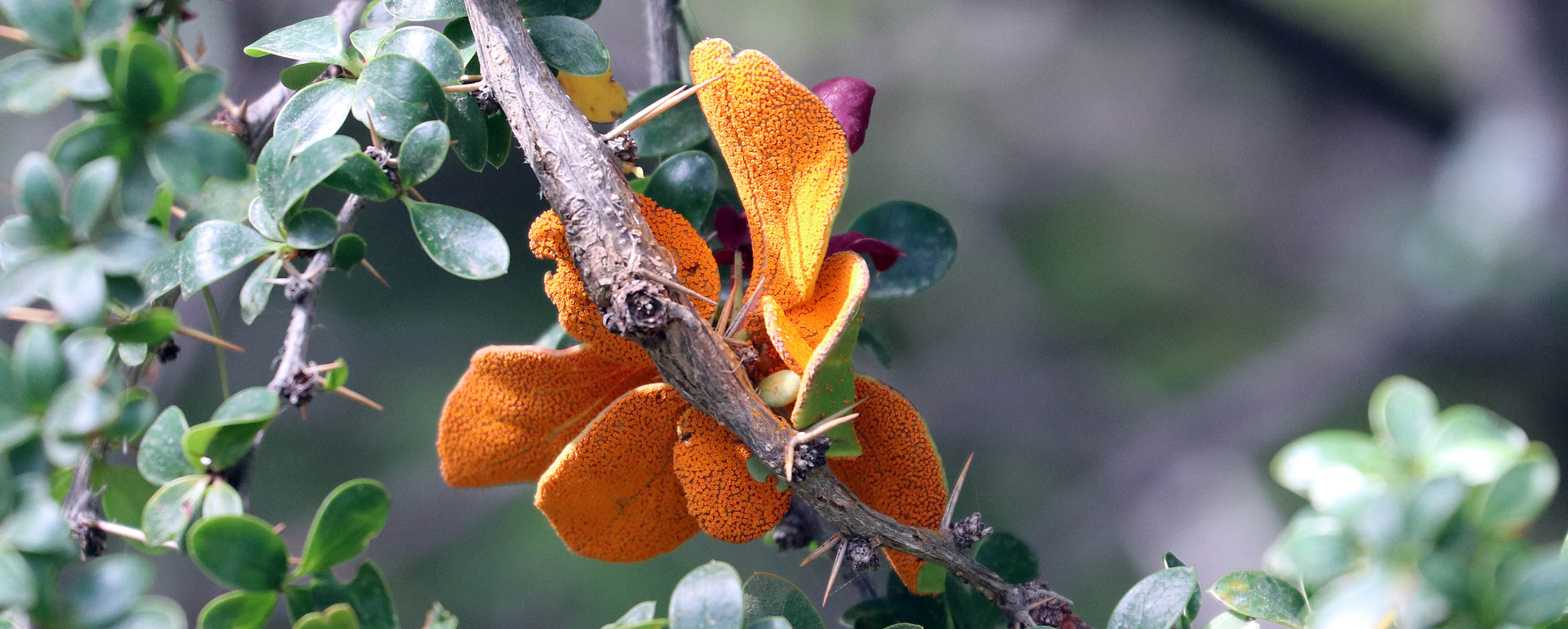 ‘Calafate Rust Fungus' (Puerto Williams, Chile)
‘Calafate Rust Fungus' (Puerto Williams, Chile)In spring and summer there are some flowers to be seen in the forest, including:
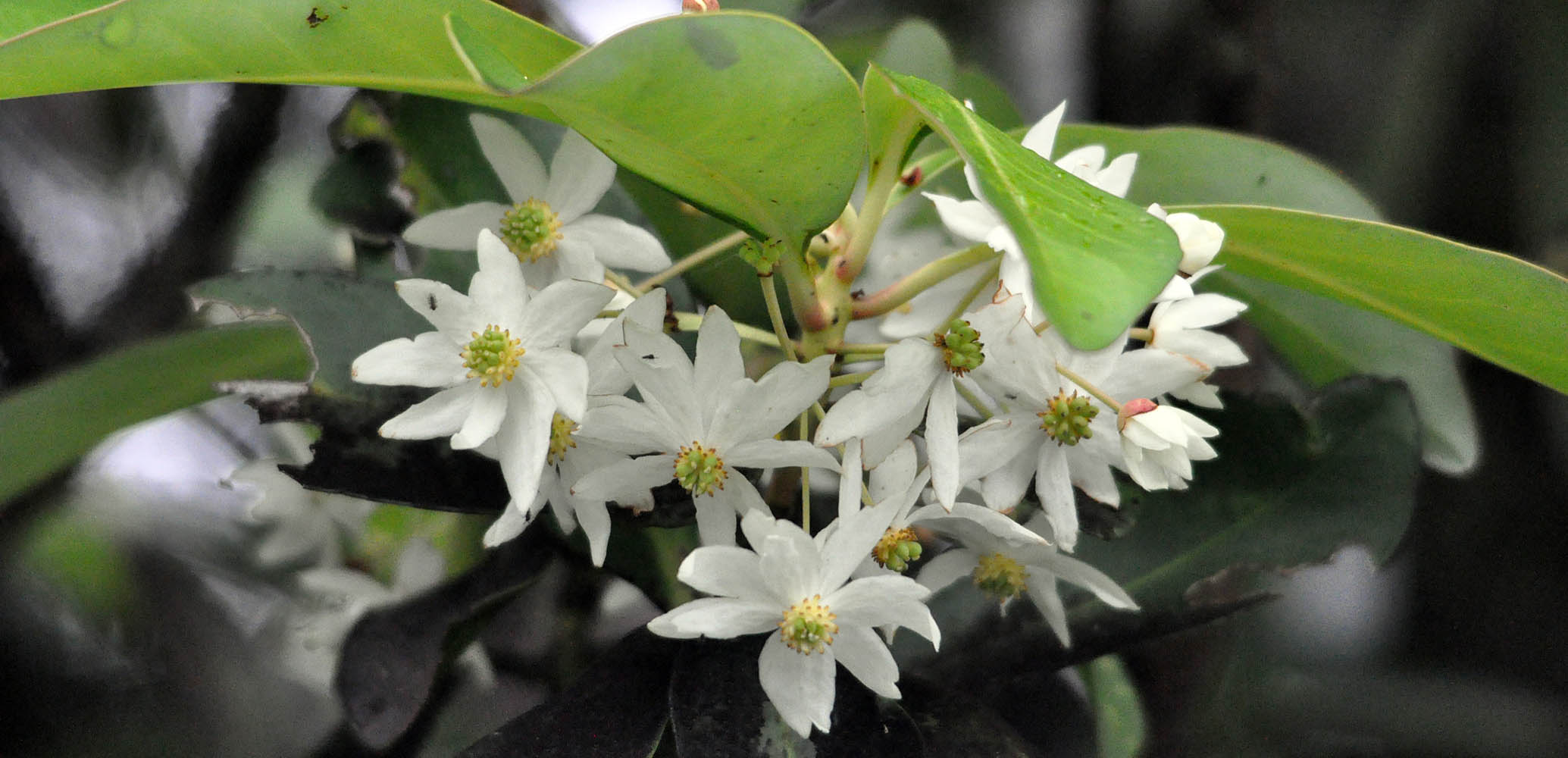 Drimys winteri (Chilean Fjords)
Drimys winteri (Chilean Fjords)The southern forests also seem to have a lot of red coloured flowers! These include:
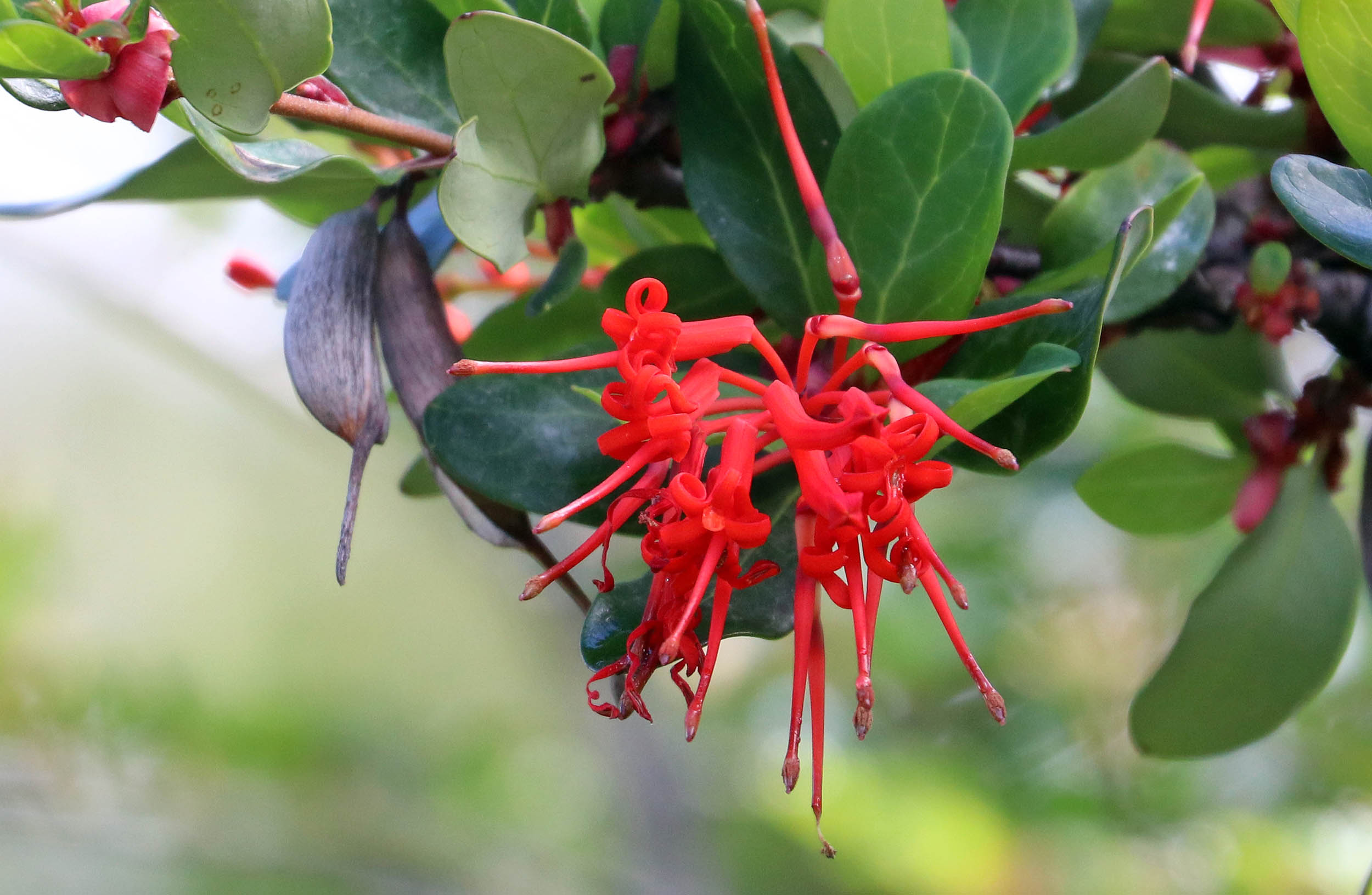 'Chilean Fire Bush' (Puerto Williams, Chile)
'Chilean Fire Bush' (Puerto Williams, Chile)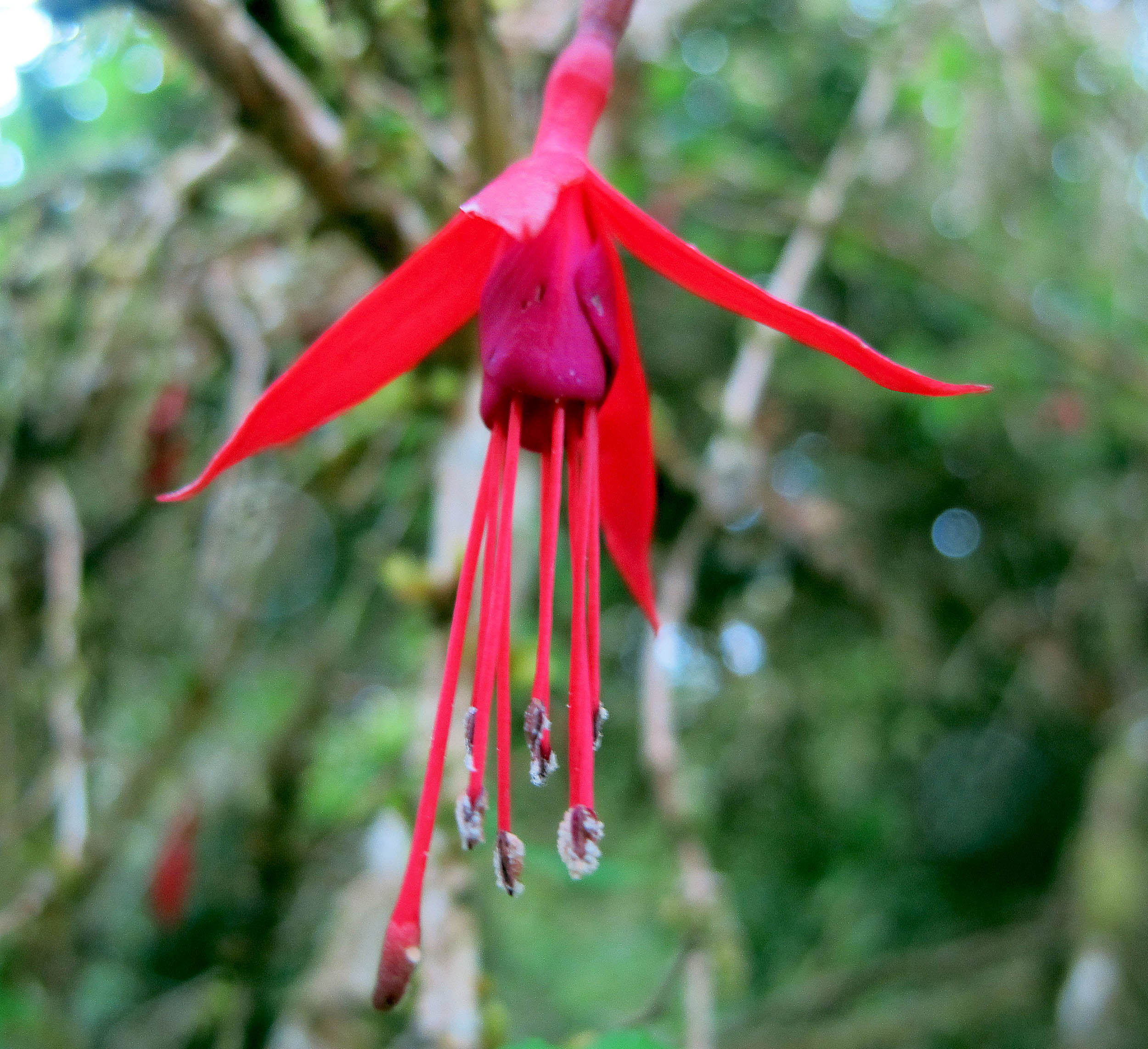 Fushia magellanica, (Chilean fjords)
Fushia magellanica, (Chilean fjords) Asteranthera ovata, 'Estrellita' (Chilean fjords)
Asteranthera ovata, 'Estrellita' (Chilean fjords)The more southerly forest of temperate South America is dominated by a number of species of ‘Southern Beeches’. Beeches are usually tall trees with distinctive tiered layered structure. Their leaves are small with 'potato chip/crisp' crinkle-cut edges.
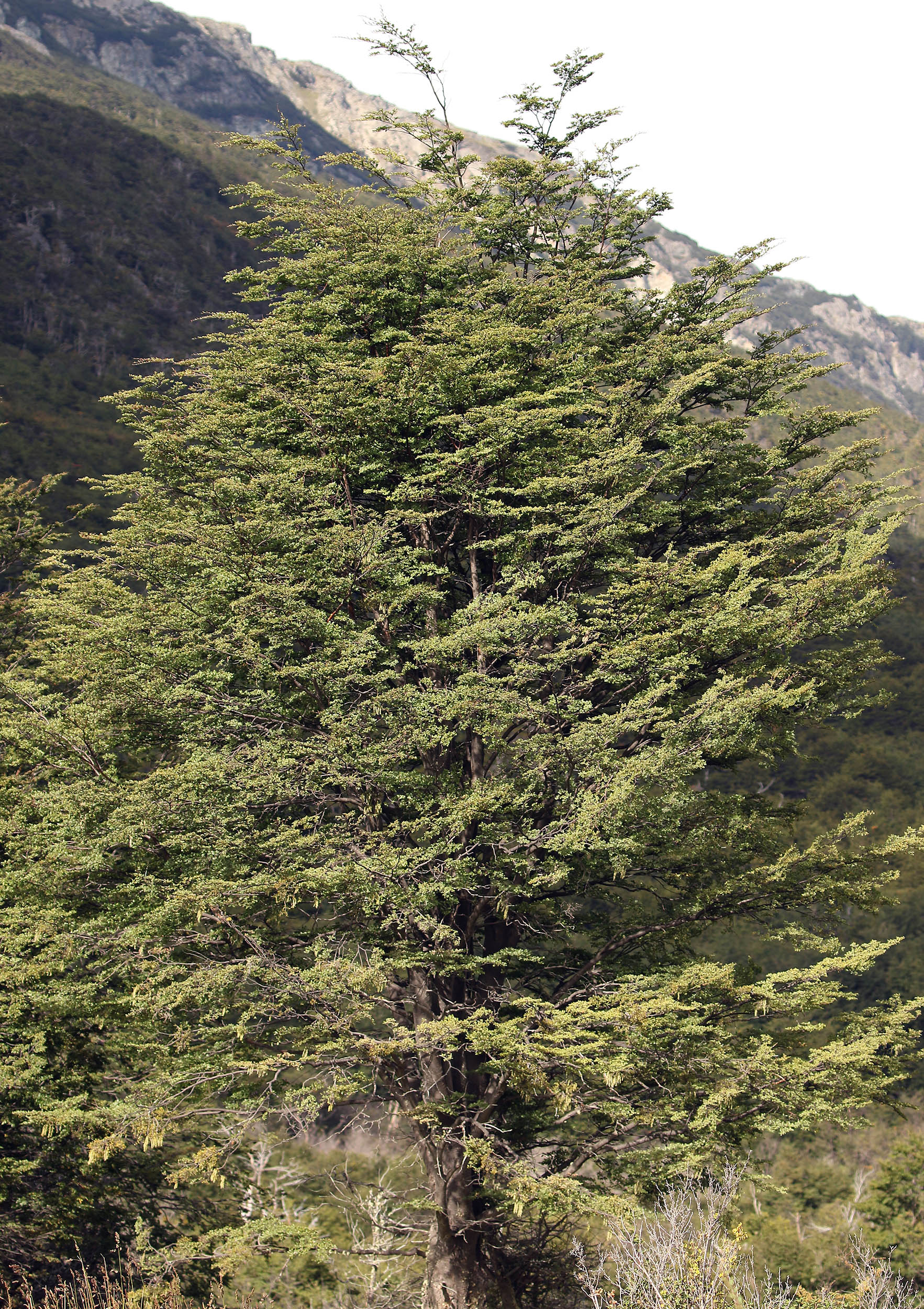 Southern Beech tree (Beagle Channel)
Southern Beech tree (Beagle Channel)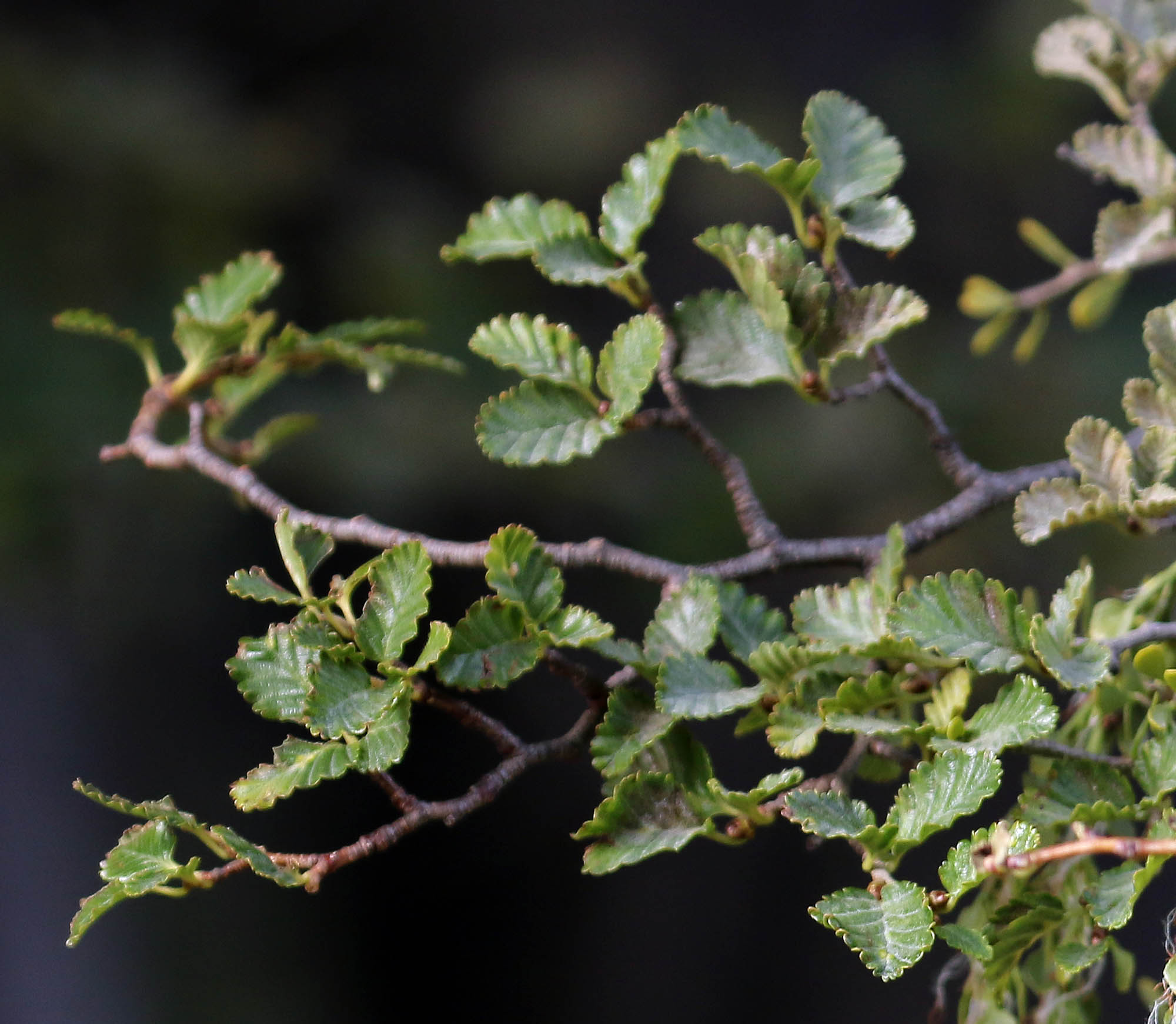 Southern Beech leaves (Beagle Channel)
Southern Beech leaves (Beagle Channel)Another feature of the trees you might notice are the 'Feathery Mistletoe' Misodendrum punctulatum. It is usually growing on Nothofagus 'Southern Beech' as a hemi-parasite. Unusually for a mistletoe, this genus is the only type where the fruits are wind-dispersed, rather than spread by birds. It is endemic to the forests of southern Chile and Argentina.
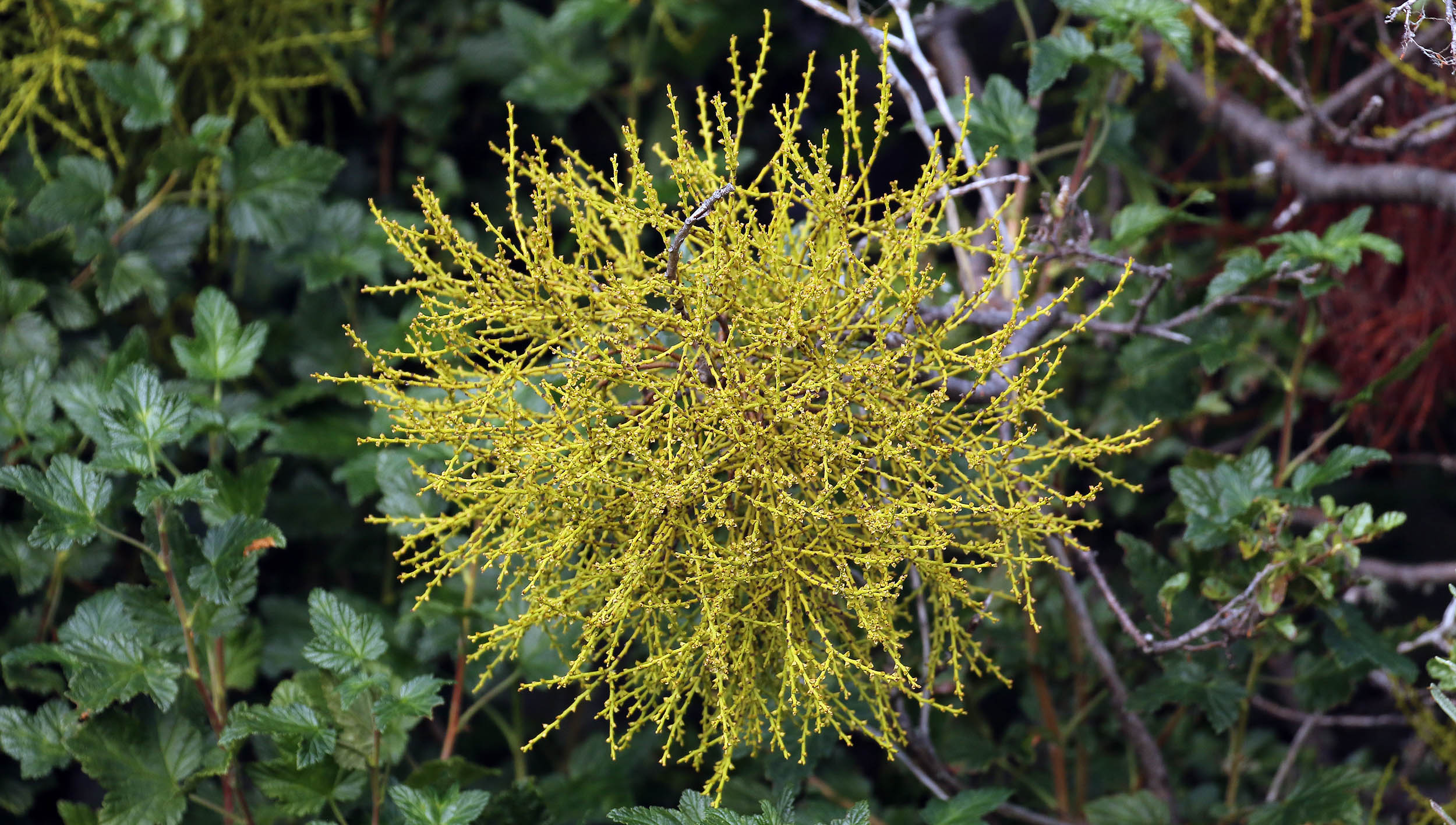 'Feathery Mistletoe' (Puerto Williams, Chile)
'Feathery Mistletoe' (Puerto Williams, Chile)There is not a huge range of species of birds in these forests compared to those further north in the Neotropics, but many of them are endemic to southern South America.
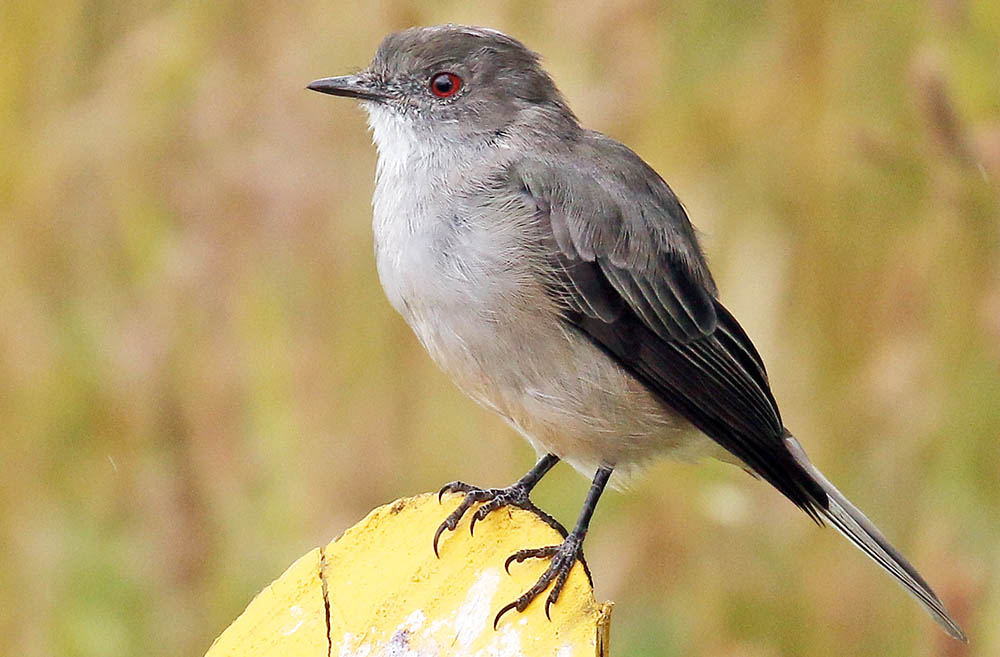 Fire-eyed Diucon, (Ushuaia, Argentina)
Fire-eyed Diucon, (Ushuaia, Argentina)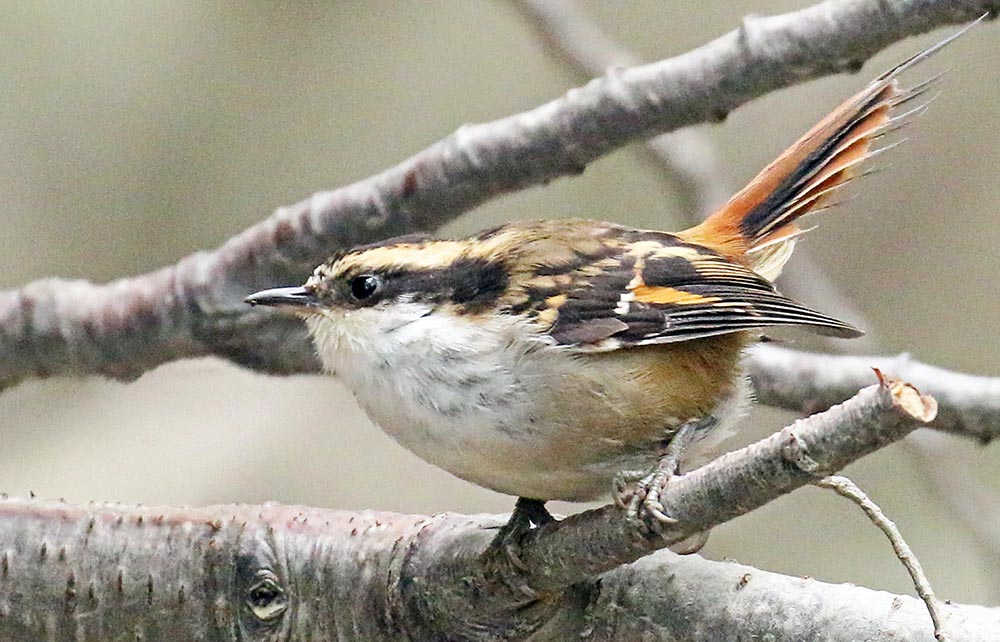 Thorn-tailed Rayadito, (Tierra del Fuego National Park)
Thorn-tailed Rayadito, (Tierra del Fuego National Park)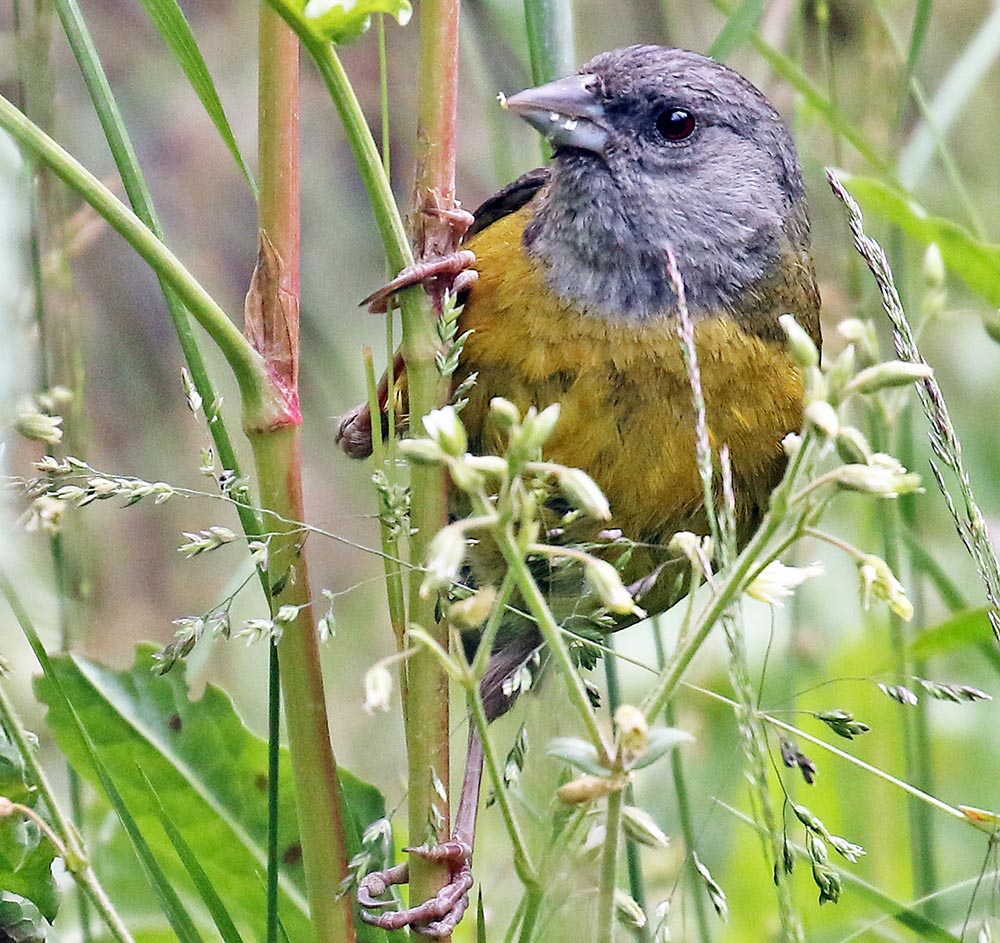 Patagonian Sierra Finch (Tierra del Fuego)
Patagonian Sierra Finch (Tierra del Fuego)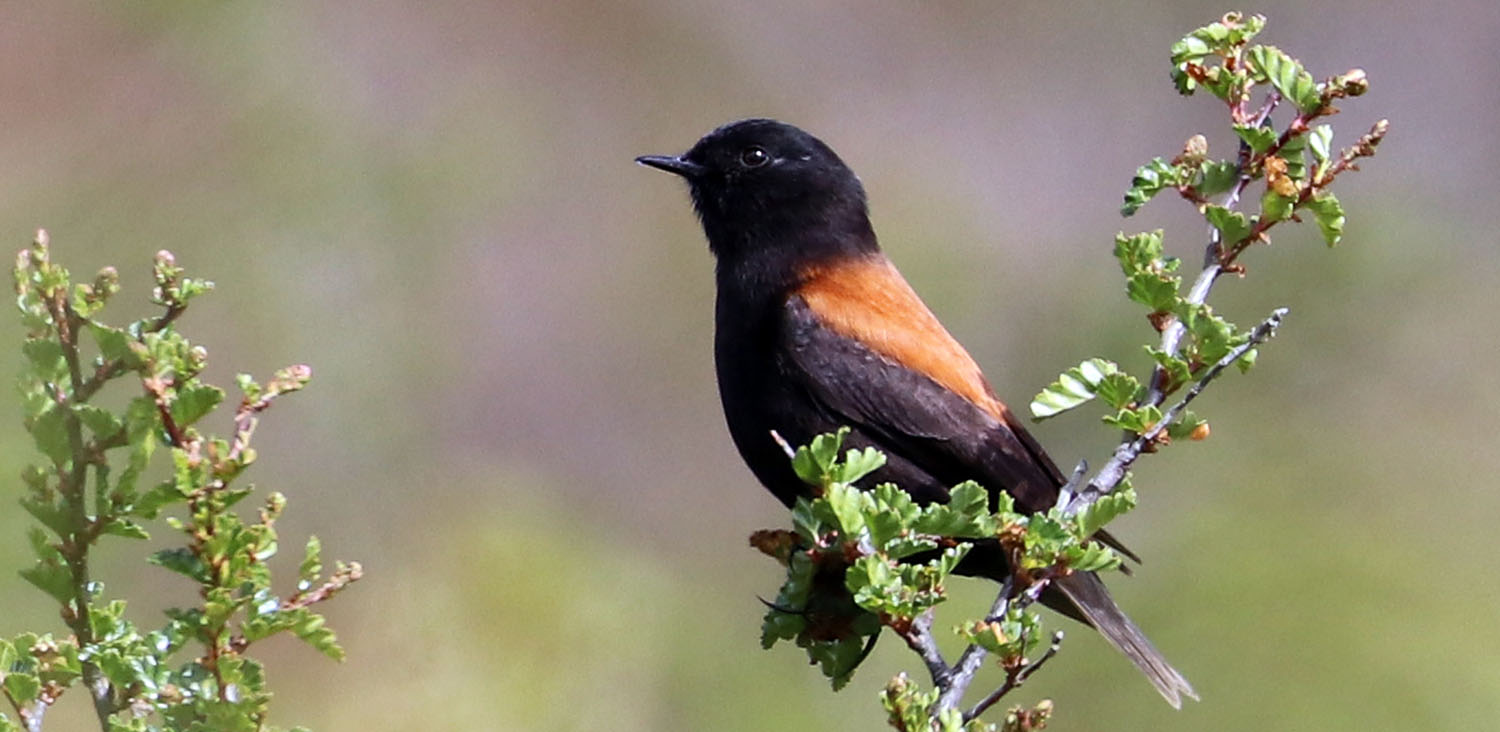 'Austral Negritos', (outside of Puerto Williams, Chile)
'Austral Negritos', (outside of Puerto Williams, Chile)Places to experience the temperate forests of southern South America
Tiera del Fuego National Park is in the extreme south of Argentina. It is a short drive from Ushuaia, and a convenient place to explore before or after a trip to Antarctica - it will be your last chance to see flowers, insects and songbirds!
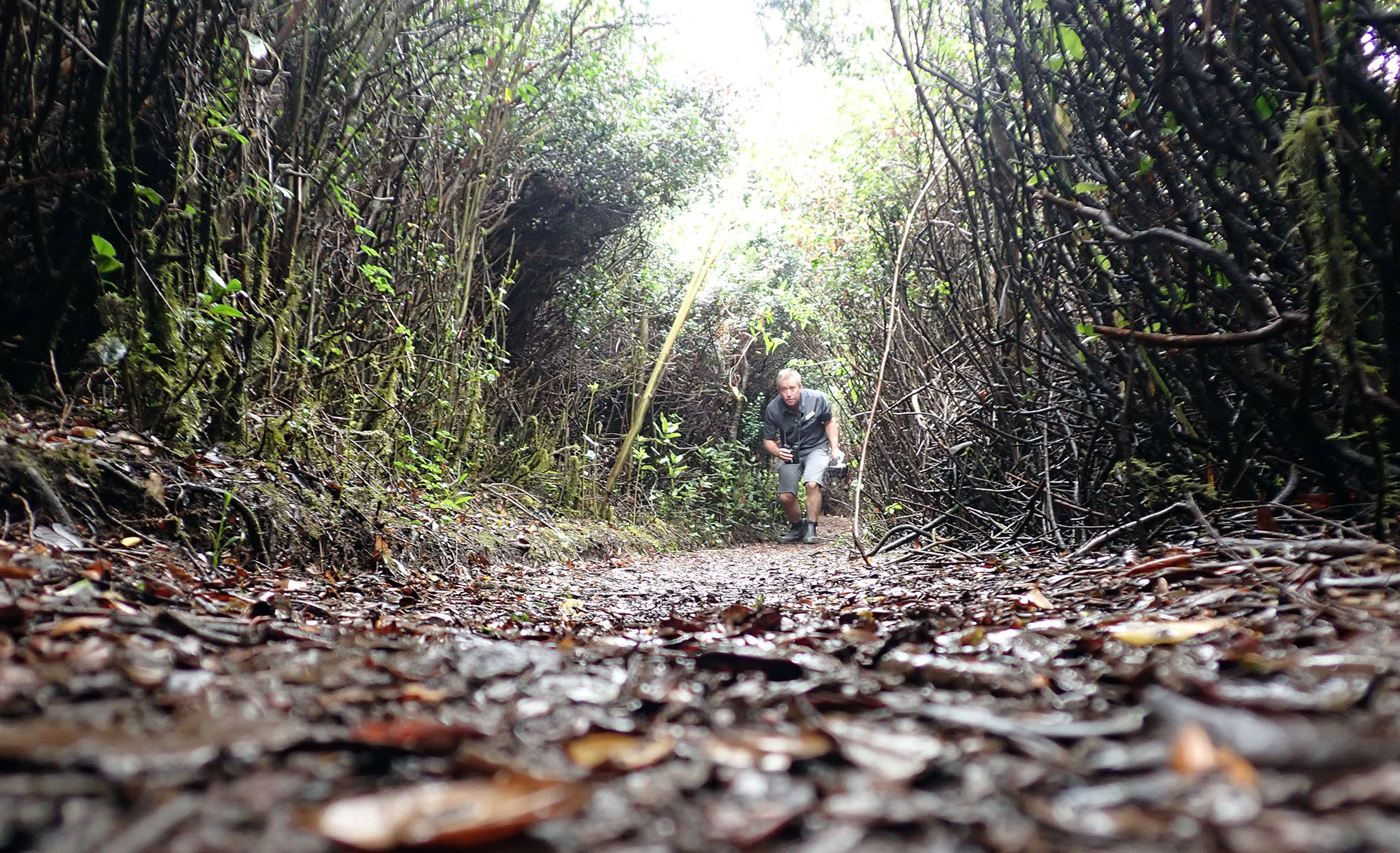 the author Damon Ramsey sneaking around the forest of southern South America!
the author Damon Ramsey sneaking around the forest of southern South America!